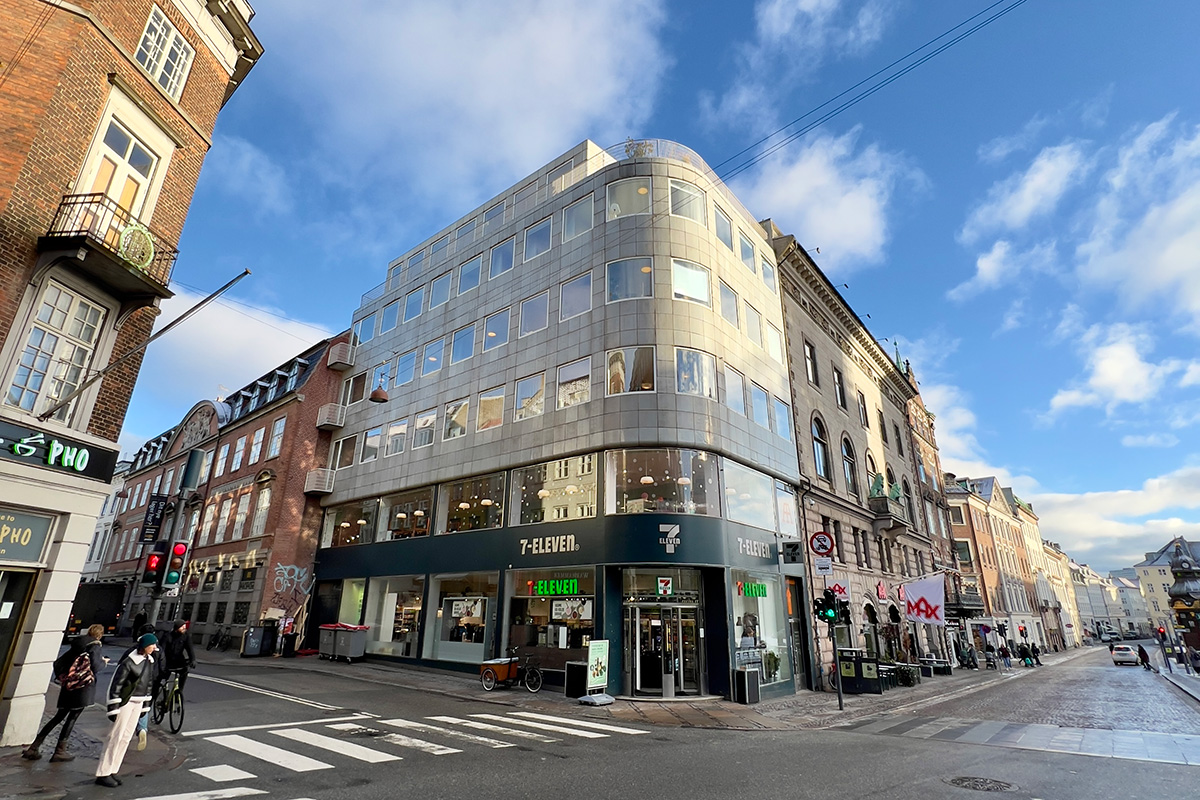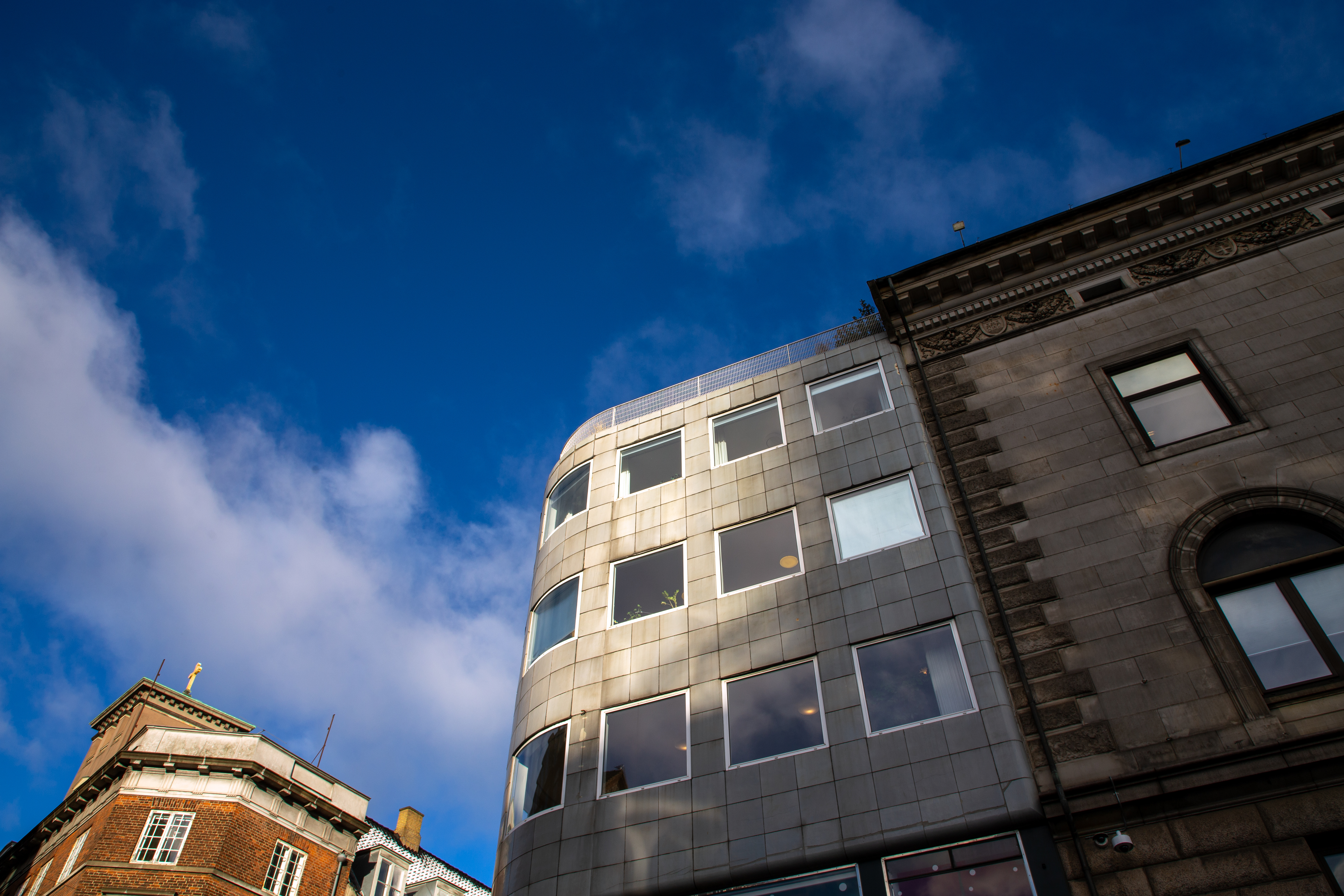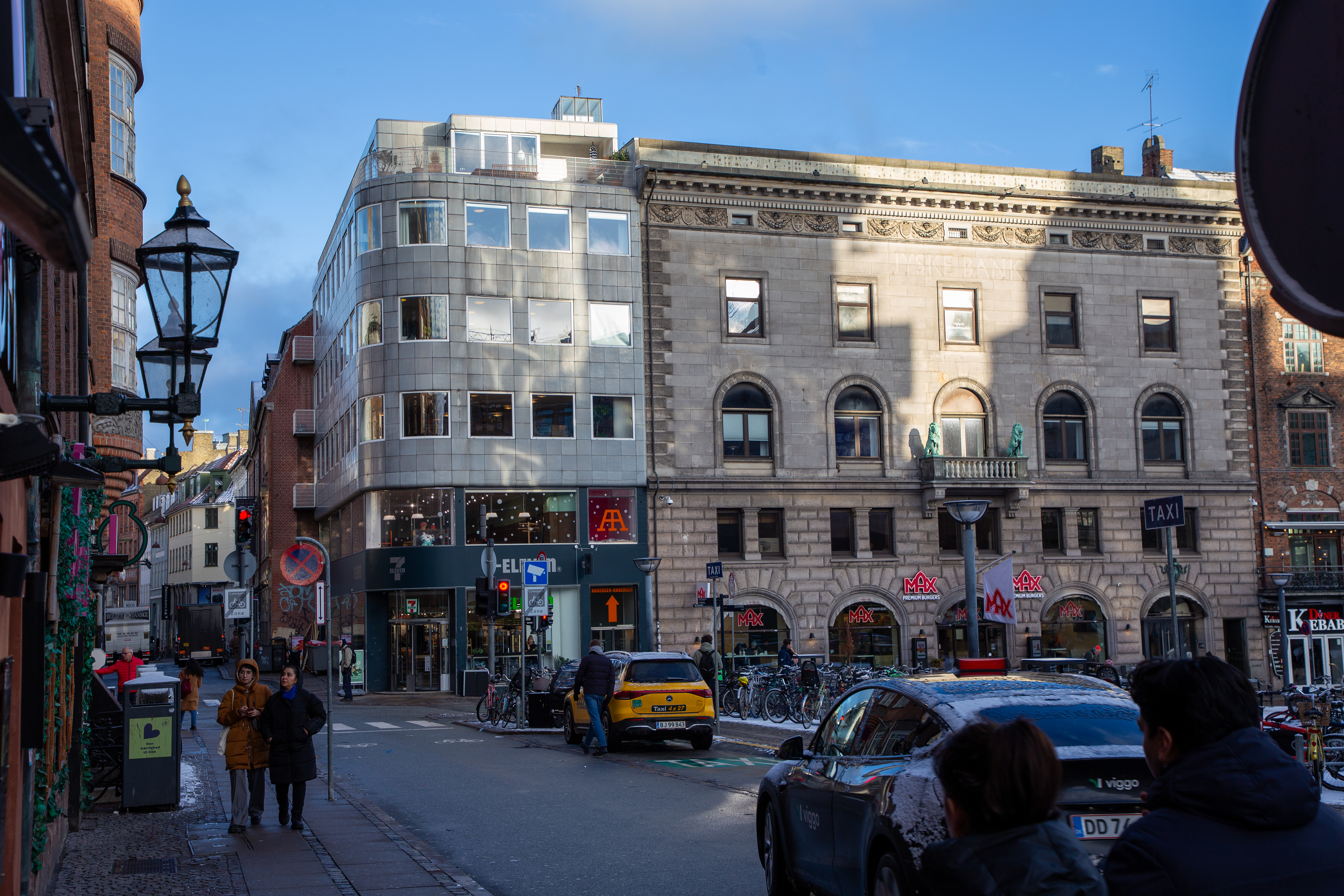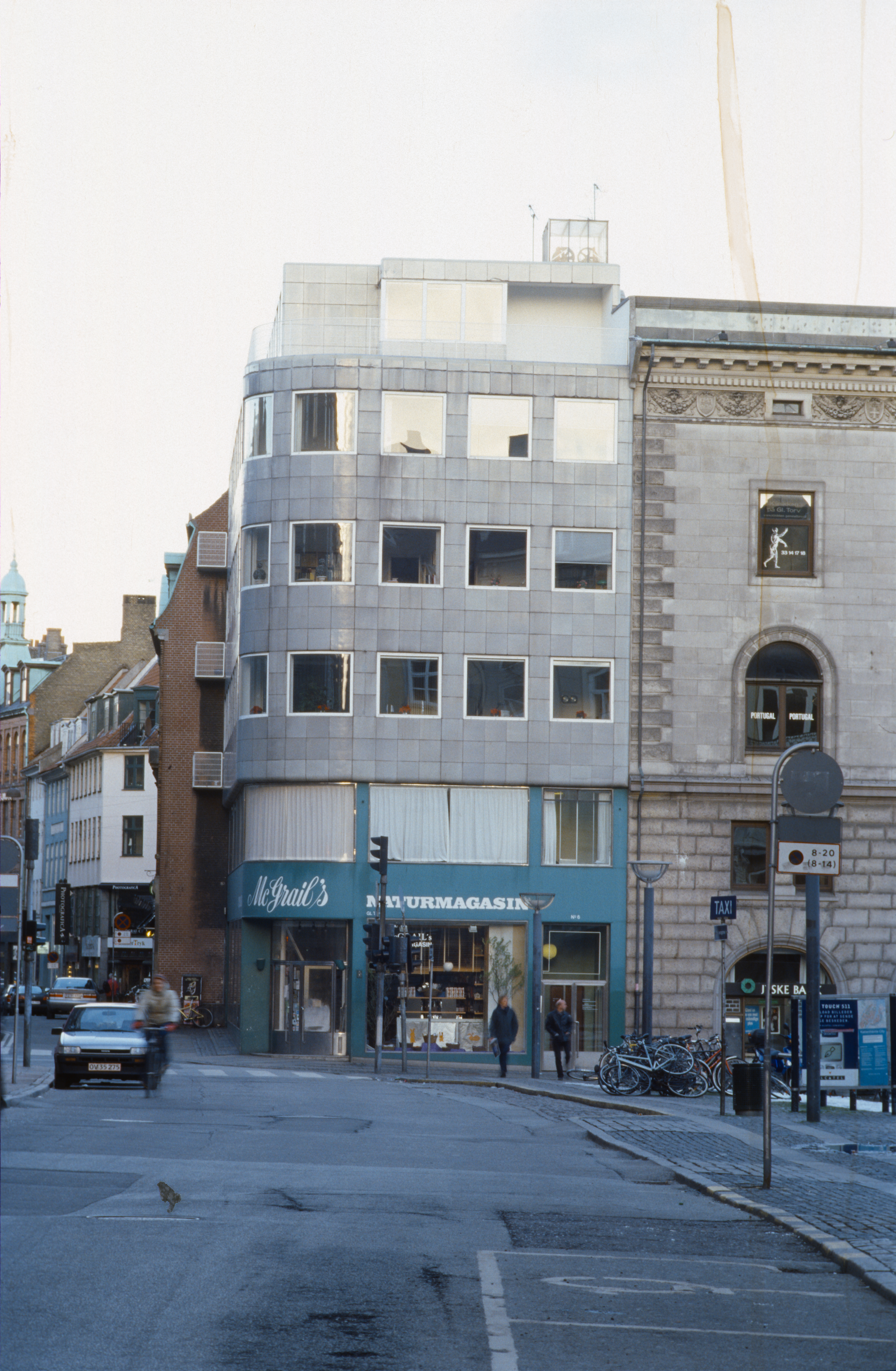People were furious about Stellings Hus when it was completed in 1937. Reinforced concrete and modern lines were new to the old square, which dates back to the very birth of the city, when beheadings and jousting matches were part of everyday life.
Today, Stellings Hus is neither loved nor hated by Copenhageners. In fact, few even give it a second thought. This is a tribute to Arne Jacobsen’s skill at creating a building that blends in with the surrounding area, and it is one of the reasons why the building is now listed as a historical site.
If you take a step back from Stellings Hus, you can get an idea of how the lines extend from the neighboring buildings. And you will notice that the corner is rounded and that the ground floor isn’t as heavy looking as the other buildings surrounding the square. Try to get a peek through the windows on the second floor and you just might see the lamp that Arne Jacobsen designed for Stellings Hus.
If you let your eye wander all the way around the two squares, Gammeltorv and Nytorv, you will see traces of life lived through many centuries. At the time, nobody could have known that Arne Jacobsen would become such an important figure in posterity. But now it makes sense that he was the architect to add a building to this area, where Copenhagen’s 800-year-old history weighs heaviest.
Facts
- Stellings Hus was built for the paint dealer A. Stelling, with a shop on the ground floor and offices in the rest of the building. Today, there is a café on the ground floor.
- The Stelling pendant lamp features opal glass and has recently been put into production again.
- Gammeltorv – meaning “old square” – dates back to the 1200s and was the most important square in Copenhagen for centuries.
- Copenhagen City Hall was situated here until it burned down in the great fire of 1728. However, you can see the outlines of the building in the paving stones on the pedestrian street, Strøget.
- The fountain is actually the Caritas Well and is Copenhagen’s oldest fountain. It was built by King Christian IV to make use of the good water pressure that built up as the water traveled down to the city via canal from Lake Emdrup, north of Copenhagen.
- On national holidays, golden “apples” are still placed in the fountain to bob in the streams of water.
- In ancient times, there was a scaffold on the square. Many historical events have culminated with public beheadings right here.
- On the opposite side of Strøget is the more recent Nytorv – meaning “new square”. It was built in the 1600s, when King Christian IV had buildings and courtyards demolished to make room for the square.
- The scaffold was moved to the new square and there was also room for a pillory. This was the location of public lashings of prostitutes and petty thieves. On Nytorv, the spot where the pillory stood is now elevated slightly.
- The executioner lived on Nytorv near the dungeons.
Nearby
Behind Gammeltorv are several quaint side streets in Copenhagen’s Latin Quarter, Pisserenden – meaning literally “the piss gutter” due to the stench back in the old days. This quarter has been home to some of Copenhagen’s counter culture and alternative music culture over the years, and you will find many little bars and shops here.
If you cross Nytorv and proceed along the street that tunnels between two buildings, you will eventually reach the last of the classic old movie theaters in Copenhagen, Grand, which has shown films since 1923. There is also a café which serves simple fare.





